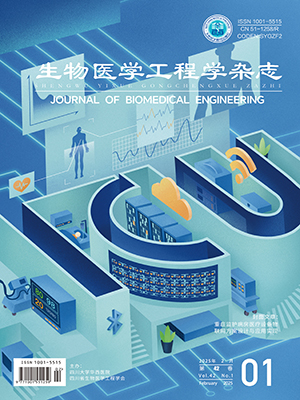| 1. |
Sepantafar M, Maheronnaghsh R, Mohammadi H, et al. Engineered hydrogels in cancer therapy and diagnosis. Trends Biotechnol, 2017, 35(11): 1074-1087.
|
| 2. |
Thambi T, Li Y, Lee D S. Injectable hydrogels for sustained release of therapeutic agents. J Control Release, 2017, 267: 57-66.
|
| 3. |
Dimatteo R, Darling N J, Segura T. In situ forming injectable hydrogels for drug delivery and wound repair. Adv Drug Deliver Rev, 2018, 127: 167-184.
|
| 4. |
Kingston D G I. Taxol: The chemistry and structure-activity relationships of a novel anticancer agent. Trends Biotechnol, 1994, 12(6): 222-227.
|
| 5. |
Wang F, Porter M, Konstantopoulos A, et al. Preclinical development of drug delivery systems for paclitaxel-based cancer chemotherapy. J Control Release, 2017, 267: 100-118.
|
| 6. |
Mao L, Wang H, Tan M, et al. Conjugation of two complementary anti-cancer drugs confers molecular hydrogels as a co-delivery system. Chem Commun, 2012, 48(3): 395-397.
|
| 7. |
Song Q, Zhang R, Lei L, et al. Self-assembly of succinated paclitaxel into supramolecular hydrogel for local cancer chemotherapy. J Biomed Nanotechnol, 2018, 14(8): 1471-1476.
|
| 8. |
Wang H, Lv L, Xu G, et al. Molecular hydrogelators consist of Taxol and short peptides/amino acids. J Mater Chem, 2012, 22(33): 16933-16938.
|
| 9. |
Wang H, Wei J, Yang C, et al. The inhibition of tumor growth and metastasis by self-assembled nanofibers of taxol. Biomaterials, 2012, 33(24): 5848-5853.
|
| 10. |
Zhang K, Zhou L, Chen F, et al. Injectable gel self-assembled by paclitaxel itself for in situ inhibition of tumor growth. J Control Release, 2019, 315: 197-205.
|
| 11. |
Liu C, Ruan C, Shi R, et al. A near infrared-modulated thermosensitive hydrogel for stabilization of indocyanine green and combinatorial anticancer phototherapy. Biomater Sci-UK, 2019, 7(4): 1705-1715.
|
| 12. |
Pais-Silva C, De Melo-Diogo D, Correia I J. IR780-loaded tpgs-tos micelles for breast cancer photodynamic therapy. Eur J Pharm Biopharm, 2017, 113: 108-117.
|
| 13. |
Alves C G, Lima-Sousa R, De Melo-Diogo D, et al. IR780 based nanomaterials for cancer imaging and photothermal, photodynamic and combinatorial therapies. Int J Pharmaceut, 2018, 542(1-2): 164-175.
|
| 14. |
Li Y, Zhou Q, Deng Z, et al. IR-780 dye as a sonosensitizer for sonodynamic therapy of breast tumor. Sci Rep-UK, 2016, 6(1): 25968.
|
| 15. |
Gorka A P, Schnermann M J. Harnessing cyanine photooxidation: From slowing photobleaching to near-ir uncaging. Curr Opin Chem Biol, 2016, 33: 117-125.
|
| 16. |
Widengren J C A, Eggeling C, et al. Strategies to improve photostabilities in ultrasensitive fluorescence spectroscopy. J Phys Chem A, 2007: 429-440.
|
| 17. |
Vogelsang J, Kasper R, Steinhauer C, et al. A reducing and oxidizing system minimizes photobleaching and blinking of fluorescent dyes. Angew Chem Int Edit, 2008, 47(29): 5465-5469.
|
| 18. |
Glembockyte V, Lincoln R, Cosa G. Cy3 photoprotection mediated by ni2+ for extended single-molecule imaging: Old tricks for new techniques. J Am Chem Soc, 2015, 137(3): 1116-1122.
|
| 19. |
King R E, Bomser J A, Min D B. Bioactivity of resveratrol. Compr Rev Food Sci F, 2006, 5(3): 65-70.
|
| 20. |
Fiod Riccio B V, Fonseca-Santos B, Colerato Ferrari P, et al. Characteristics, biological properties and analytical methods of trans-resveratrol: A review. Crit Rev Anal Chem, 2020, 50(4): 339-358.
|
| 21. |
Miele D, Catenacci L, Sorrenti M, et al. Chitosan oleate coated poly lactic-glycolic acid (PLGA) nanoparticles versus chitosan oleate self-assembled polymeric micelles, loaded with resveratrol. Mar Drugs, 2019, 17(9): 515.
|
| 22. |
Tang B, Fang G, Gao Y, et al. Liprosomes loading paclitaxel for brain-targeting delivery by intravenous administration: In vitro characterization and in vivo evaluation. Int J Pharmaceut, 2014, 475(1-2): 416-427.
|
| 23. |
Nikfarjam M, Muralidharan V, Christophi C. Mechanisms of focal heat destruction of liver tumors. J Surg Res, 2005, 127(2): 208-223.
|
| 24. |
Nani R R, Kelley J A, Ivanic J, et al. Reactive species involved in the regioselective photooxidation of heptamethine cyanines. Chem Sci, 2015, 6(11): 6556-6563.
|
| 25. |
Ko J H, Sethi G, Um J Y, et al. The role of resveratrol in cancer therapy. Int J Mol Med, 2017, 18(12): 2589.
|




